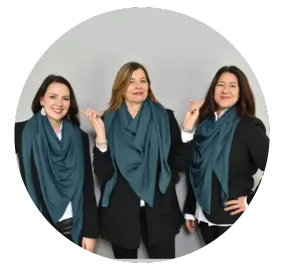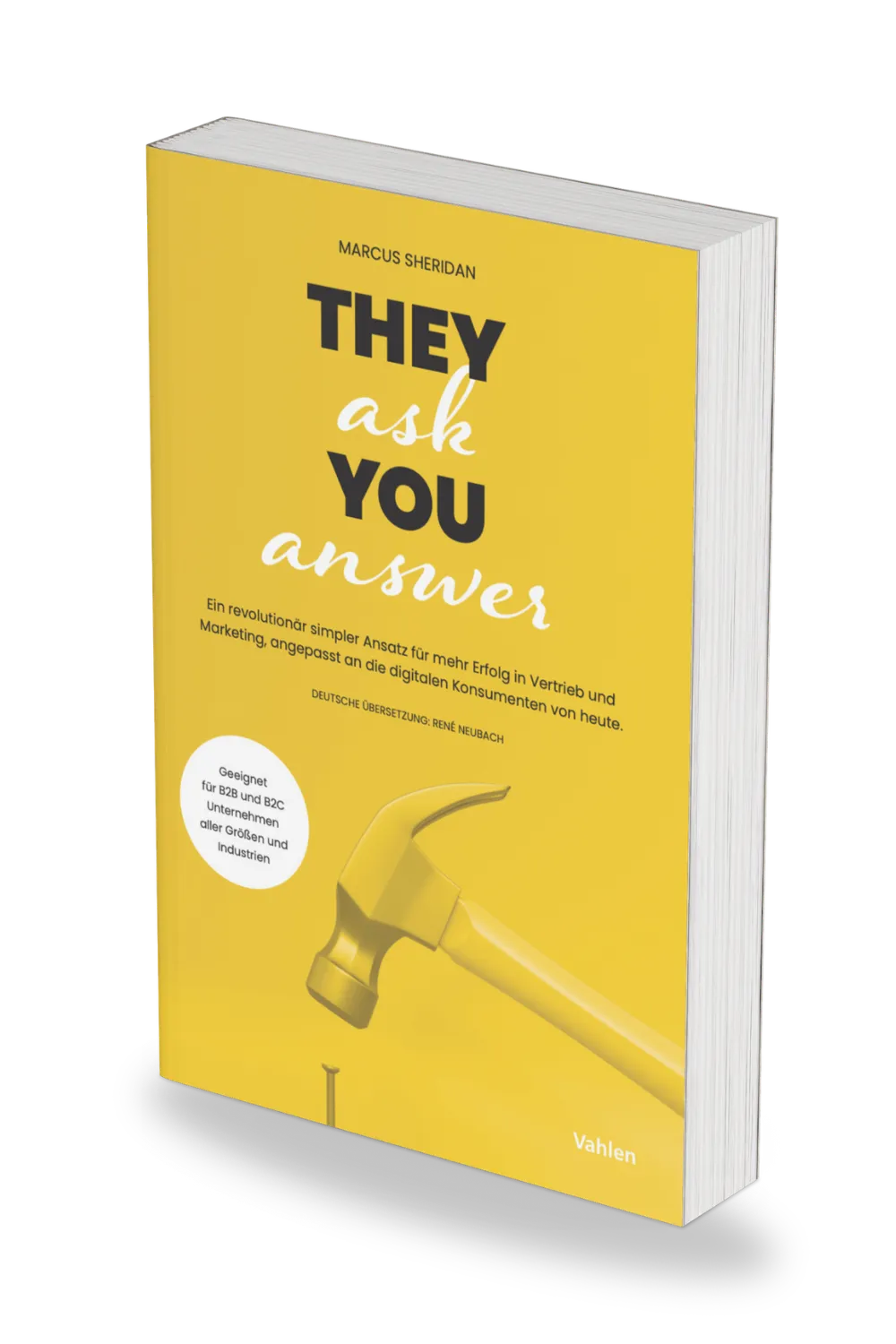Deine Pipeline lebt von alten Deals und Empfehlungen? Neue Anfragen bleiben aus?
Wir helfen B2B‑Unternehmen in Industrie und Technologie, ein internes System aufzubauen, das aus echtem Kundenverständnis qualitativ relevante Pipeline erzeugt.
Durch klares Messaging, Co‑kreierte Umsetzung und KI‑gestützte Content‑Produktion, die dein Vertrieb wirklich nutzt.
Der blinde Fleck im Go-To-MArket
Dein Team produziert Inhalte – aber es entsteht keine Nachfrage.
Ihr klingt wie alle anderen. Der Markt erkennt keinen Unterschied & dein Vertrieb nutzt Materialien nicht.
Tools, Agenturen und Templates ersetzen kein System.
Warum das ein Problem ist...
Ohne kundenzentriertes Messaging wird Content ignoriert.
Ohne gemeinsames System bleibt Wachstum Zufall.
KI ohne Kontext erzeugt generische Outputs statt Relevanz.
Die Konsequenz:
Content wird zur Kostenstelle, Sales improvisiert, die Pipeline trocknet aus.
Unser Ansatz: System statt Zufall
Wir starten nicht bei Kampagnen, sondern bei den Problemen eurer Käufer:innen.
Wir Co‑kreieren ein wiederholbares System, das euch gehört und von Agenturen unabhängig macht
Wir trainieren euer internes, KI‑gestütztes Content‑System mit eurem Fachwissen und den Bedürfnissen Eurer Kunden.
Das System in 3 Schritten
Als erfolgreiches Unternehmen baust du langfristiges Wachstum auf dem Fundament dieser 3 Säulen auf

1. Klarheit und Struktur
Buyer‑Insights, Positionierung, Messaging‑Framework.
Ergebnis: gemeinsame Sprache von Marketing & Sales, Prioritäten, Content‑Themenplan.

2. Aufbau des Systems
Content‑Strategie, Redaktionssystem, Distribution, KI‑gestützte Produktion.
Ergebnis: skalierbarer Content Output, den Sales und Marketing nutzt

3. Implementierung und Enablement
Sales Enablement Ergebnis: messbare Wirkung auf Pipeline, kürzere Saleszyklen, internes Know‑how.
Lösungen für dein Wachstum
Unternehmen aus Industrie, und Technologie – mit komplexen Lösungen und langen Verkaufszyklen.
B2B‑Unternehmen mit kleinen Teams, die Wirkung statt Volumen wollen.
Teams, die Agentur‑unabhängig werden und internes System‑Wissen aufbauen wollen.
Was andere über die Arbeit mit Content Glory sagen...

"Sparringspartner auf Augenhöhe"
„René Neubach ist ein reaktionsschneller Sparringspartner für Marketingthemen auf Augenhöhe. Er gibt sehr wertvollen Input, sowohl auf theoretischer als auch auf praktischer Ebene. Er ist einer der wenigen zertifizierten „They Ask, You Answer“ Coaches, der Ansatz von Marcus Sheridan, auf dem wir unser Marketing aufgebaut haben. Wir haben nicht viel Zeit gebraucht, um uns kennenzulernen. Es war ein Kickstart und dann ging es los.“
Filip Miermans | KEBA

"Erfahrung und Expertise"
„René überzeugt mit authentischer Erfahrung und eindeutiger Expertise, gepaart mit einer angenehmen und kurzweiligen Art – und lebt genau das, was er ‚predigt': Er hat sich davor Gedanken darüber gemacht, was uns denn bewegt, wo unsere Herausforderungen sein können und wie er uns helfen kann, diese kleiner werden zu lassen.“
Markus Stickler | MSD Austria

"Kompetenz und Leidenschaft"
„Content Glory hat uns vom Mittelalter abgeholt und in eine moderne Marketing-Ära gebracht. Immer kreativ, geduldig und inspirierend. Man spürt durchgehend die Kompetenz und Leidenschaft! Danke!“
Martine Pey | Recom Relocation

"Kundennutzen und Qualität"
„Die strukturierte Herangehensweise von Content Glory hat uns immens dabei geholfen, unsere Zielgruppen eindeutig zu definieren und einen Content-Plan zu entwickeln, der den Kundennutzen stets im Vordergrund trägt. Vielen Dank fürs ständige Hinterfragen und Challenges – das macht sich nun insgesamt in der Qualität unseres Social Media-Auftritts bemerkbar.“
Eva Brosch | Patientenstimme
Selbst-Evaluierung
3-Minuten-Check: Wo steht ihr heute?
Nutzt euer Sales‑Team Content – oder entsteht alles ad hoc?
Klingen eure Botschaften wie alle anderen – oder klar differenziert?
Gibt es ein gemeinsames System oder viele Einzellösungen?
Wachsen mit Erfolgserprobten Frameworks
Wachstum für dich und dein Unternehmen - gemeinsam mit Gleichgesinnten.
Egal ob dein Unternehmen wenig Ressourcen und kleine Marketing-Teams hat.
Egal, ob dein Unternehmen in Industrie, Technologie oder Gesundheitsbereich, im Handwerks- oder Dienstleistungssektor tätig ist.
Workshops, Consulting und Coaching Services, die sich an deine Voraussetzungen und dein Umfeld anpassen.
Mit Coaches, die dich und dein Team auf dem Weg zu nachhaltigem Wachstum begleiten.
Basierend auf erprobten Frameworks, die bereits hunderten Unternehmen zum Erfolg verholfen haben.

Niemals Stillstehen. Laufend Lernen.
Inhalte, die dich persönlich und dein Unternehmen weiterbringen...

Medien
Content Glory und René Neubach in Podcasts und Video-Interviews
Ein Auszug unserer bisherigen Kunden
Schmachtl
KEBA
Novartis
Kapsch
Pfizer
Chiesi
GCI
Roche
Eisai
LXM Group
Recom Relocation
Job-TransFair
Merz Therapeutics
Merz Aesthetics
Mondi
Patientenstimme
NEOS
HD Austria
Pharma Marketing Club Austria
Bisnode
PhilsPlace
Solutions Factory
Techbold
Abbott


